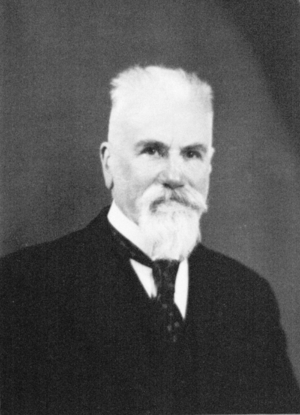Arie de Jong facts for kids
Arie de Jong (born October 18, 1865, in Jakarta, Dutch East Indies – died October 12, 1958, in Putten, Netherlands) was a Dutch doctor and a big supporter of the constructed language called Volapük. This language was created by Johann Martin Schleyer.
Arie de Jong helped the Volapük movement become strong again, especially in the Netherlands. He didn't just improve the language; he also helped start the Dutch Universal Volapük Club. He even created and edited a newspaper called Volapükagased pro Nedänapükans, which was published for 31 years! He wrote a grammar book for Volapük and a German-Volapük dictionary. He also translated the New Testament from Greek into Volapük. Many people believe Arie de Jong was the most important person in the modern history of Volapük.
Contents
Who Was Arie de Jong?
Early Life and Education
Arie de Jong was born on October 18, 1865, in Batavia (which is now Jakarta). At that time, it was part of the Dutch East Indies. In 1873, his family moved to Leiden, Netherlands. There, he went to grammar school from 1873 to 1883. After that, he studied medicine at Leiden University from 1883 to 1891.
In February 1891, he earned his doctorate degree. Soon after, in March, he became a military medical officer. He was sent to the East Indies. In September, he became a university medical doctor in Freiburg after writing a special paper.
A Doctor's Life in the Tropics
On February 18, 1892, Arie de Jong married Maria Elisabeth Wilhelmina Clarkson. They left for the Dutch East Indies a month later. Sadly, Maria died during the journey. Arie arrived in Batavia alone. He then traveled to Makassar to start his work.
Over the years, Arie de Jong worked as a doctor in many different places across the Dutch East Indies. He moved to Bonthain in 1893, then to Padang and Aceh in 1896. In 1898, he moved to Sintang, where he married Elise Marie Wilhelmine Gerardine Chavannes.
He became a first-class medical officer in 1900. He continued to move to different cities like Semarang and Ungaran. During these years, he faced personal losses with the deaths of two of his children.
Arie de Jong took a break in 1904 and spent a year in Europe. When he returned to the East Indies in 1905, he continued his medical work in places like Pelantoengan, Yogyakarta, and Magelang. In 1912, he moved to Banjarmasin. After another break in Europe, he was sent to Surabaya and then Malano. Sadly, his second wife, Elise Marie, passed away in Malano in 1915.
During his time in the Dutch East Indies, Arie de Jong played a very important role. He helped fight many tropical diseases. New ways to treat illnesses were appearing, and he was part of these changes. He also helped people with leprosy by giving them things to do, like playing music or simple jobs. This was a very kind thing to do, especially since such actions were not common back then.
Family Life and Return Home
After his second wife died in 1919, Arie de Jong returned to the Netherlands. In 1920, at 54 years old, he made The Hague his home. In 1921, he married his third wife, Louise van Dissel. They had three children together: Louisa Cornelia (born in 1922), Arie de Jong, Jr. (born in 1924), and Gijsbertus Hendrienus (born in 1926).
A Passion for Volapük
While he was studying in Leiden, Arie de Jong discovered Volapük. He started learning the language. On March 20, 1891, when he was 25, he earned his diploma to teach Volapük. Ten months later, he became a Volapük instructor. By May 15, 1893, he was a Volapük professor!
Even while he was working as a doctor in the East Indies, Arie de Jong kept his interest in Volapük alive. He wrote letters to other Volapük supporters and read Volapük newspapers. In 1901, he became a member of the Volapük Academy, which is a group that helps guide the language.
What Did Arie de Jong Write?
Arie de Jong wrote and edited many important books and papers about Volapük:
- 1929. Kurze Volapük-Grammatik. This was a short Volapük grammar book.
- 1931. Gramat Volapüka. This was a more complete grammar book for Volapük.
- 1931. Wörterbuch der Weltsprache: Volapük Dictionary for Germans. This was a dictionary to help German speakers learn Volapük.
- 1932. Leerboek der Wereldtaal. This was a textbook about the world language.
- 1952. Aperçu de la Volapük. This was the Kurze Volapük-Grammatik translated into French.
- 1952. Short grammar of Volapük. This was the Kurze Volapük-Grammatik translated into English.
- 2012. Wörterbuch der Weltsprache für Deutschsprechende: Vödabuk Volapüka pro Deutänapükans. A new edition of his 1931 dictionary.
- 2012. Gramat Volapüka. A new edition of his 1931 grammar book.
See Also
 In Spanish: Arie de Jong para niños
In Spanish: Arie de Jong para niños


